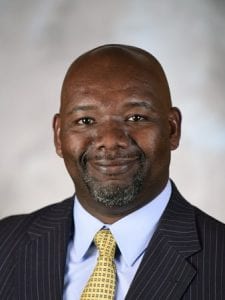AnMed Health’s Response to COVID-19: A Conversation with Michael Cunningham, Vice President for Advancement
April 30, 2020By Michael Cunningham, Vice President for Advancement, AnMed Health, with Sharon Purvis, Director of Outreach and Special Projects, Ten At The Top
AnMed Health, Anderson County’s largest employer, has been serving Anderson and surrounding counties in the Upstate and Georgia with comprehensive healthcare for over 110 years. With its mission “to passionately blend the art of caring with the science of medicine to optimize the health of our patients, staff and community,” the hospital, like hundreds of others across the country, is facing an unprecedented challenge in COVID-19.
This article is published courtesy of Ten at the Top.
Question: What staffing changes have you made during this health crisis?
Michael Cunningham: Like all upstate hospital systems we’ve responded to reduced volumes by making some difficult temporary staffing decisions. These include reductions in some team members’ work hours; reductions in the salaries of all individuals in the organization with the title of Manager and above, which includes the Executive team; and finally, some team members were furloughed.
Q: What procedural changes have you made (sanitation, etc.)?
Michael Cunningham: There have been a number of substantial operational changes but perhaps three of the major ones are visitation, staff and visitor masking, and elective surgeries. AnMed Health’s new visitation policy allows three circumstances for a visitor to accompany a patient: End of Life situations, Labor and Delivery, and the parent or guardian of a pediatric patient. We now also require all employees as well as guests and those coming for appointments to wear a mask upon entering any AnMed Health facility or practice site. We have temporarily suspended most outpatient and elective procedures, but we plan to revisit this change in the next week. Finally, we have shifted a tremendous volume of our physician practice visits to e-visits.
Q: Do you have the supplies you need?
Michael Cunningham: Thanks to a tremendous outpouring from the community and our local businesses, as well as the almost around the clock vigilance of our supply chain professionals, we have been able to maintain the bulk of the supplies we need. We are still struggling with gaining access to the materials to conduct rapid in-house testing.
Q: How are you handling your emergency services?
Michael Cunningham: We screen every patient upon entry to our ED with questions around travel history, potential community exposure, and other clinical questions. In addition, we take their temperature and then mask the patients. Family members are not allowed to accompany patients except under special circumstances and our staff in the ED all utilize appropriate PPE. Finally, we maintain close communication with all of the EMS providers in the community, allowing us to begin the triage process for patients brought in by ambulance prior to them arriving.
Q: What is your normal, pre-COVID bed occupancy rate vs. now?
Michael Cunningham: Prior to the COVID 19 pandemic, our average daily census at our Medical center was approximately 275–290 patients. The past several weeks we’ve seen that average daily census drop to 165–180 patients, which has led to the staffing challenges.
Q: What partnerships have you formed to help deal with this outbreak?
Michael Cunningham: We’ve worked closely with our local governments and the representatives of our state and federal government, our not-for profit community, our local school districts and technical school, our independent physicians, nursing homes, and our local businesses, just to name a few. This pandemic is more than any single entity or organization can address. It takes a team approach and we believe our community has assembled a great team to meet needs and be innovative in our problem solving.
Q: What is the biggest thing you need from the community right now?
Michael Cunningham: Vigilance. We feel strongly that continuing to practice responsible social distancing as well as good hand hygiene is critical. It’s the thing we can do as individuals that will have a huge impact on how quickly we can lessen the impact this has on our families and communities.














